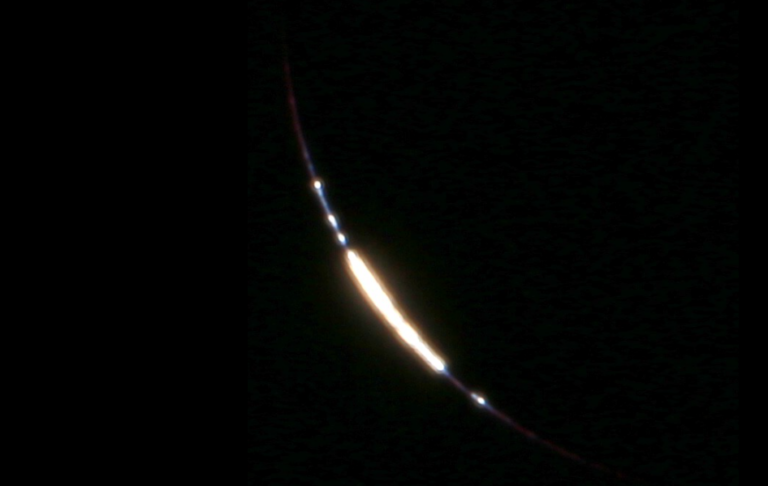For centuries, scientists have taken advantage of the special circumstances of total solar eclipses to learn about our solar system. More than 2,100 years ago, the Greek astronomer Hipparchus compared observations of such an eclipse made from different spots on Earth to calculate the distance between the Moon and Earth. His estimate of 268,000 miles is within about 11 percent of the actual distance, which is not bad considering the archaic observing techniques of the time.
In 1868, British astronomer Norman Lockyer and French astronomer Pierre Jules César Janssen independently discovered helium, the second most abundant element in the universe, while observing a total solar eclipse. Helium’s name derives from the circumstances of its discovery—the word helium comes from Helios, the Greek god of the Sun. Twenty-seven years would pass until scientists found helium on Earth.
The 2024 total solar eclipse will stretch across the United States, from the Pacific to Atlantic oceans. The last one to do this occurred on August 21, 2017. As for the 2017 eclipse, Lowell astronomers and other staff left Arizona in 1918 in order to observe the event. Observatory staff used a variety of instruments for this work, including two lenses–each with a diameter of five inches and focal length of 38.7 feet—borrowed from the U.S. Naval Observatory (these were two of the so-called “Transit of Venus objectives”, used to observe the transits of 1874 and 1882).
More famously, in 1919 British astronomer Arthur Eddington traveled to an island in the Pacific Ocean to photograph stars around an eclipsed Sun. Albert Einstein had predicted in his general theory of relativity that starlight would not travel in a straight line but instead bend slightly as it passed by an object, whose gravity would tug on the starlight. Eddington saw a perfect opportunity to test this prediction by observing and measuring starlight as it passed by the darkened Sun during a total eclipse. Eddington’s findings seemed to support Einstein’s prediction (later astronomers have debated the accuracy of Eddington’s measurements) and made Einstein an instant global celebrity.


